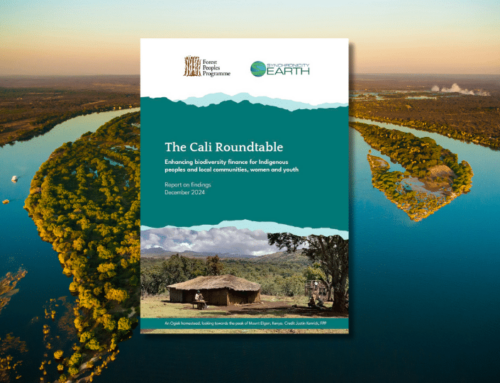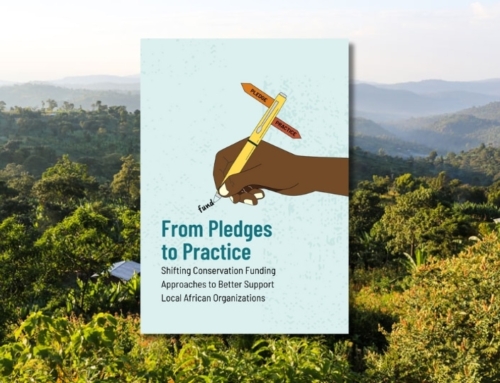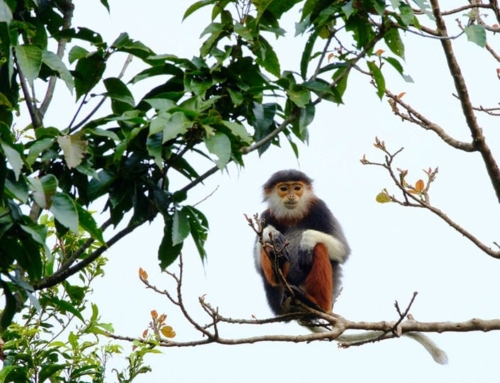“The most important things in the world that need doing cannot be done by large organizations. They will be done by many, sometimes hundreds, sometimes even thousands of smaller groups.”
So said Andrew Steer, CEO of the Bezos Earth Fund, when the new fund made a pledge to spend $10 billon to tackle climate change. However, small organisations are all too often ‘locked out’ when it comes to large pots of environmental funding, despite their combined capacity to achieve great impact.
What exactly are the barriers between donors and grantees for African grassroots organisations? How can we address these challenges? Head of Conservation Programmes Gemma Goodman summarises a new report published in collaboration between Maliasili and Synchronicity Earth asking both recipients and providers of funding how to make grant-giving in Africa more effective.
Greening the Grassroots report
Globally, less than one per cent of all climate funding reaches Indigenous Peoples and Local Community organisations. Only 6.7 per cent of UK foundations’ environmental giving goes to Africa. Even when looking at African philanthropic giving to African grantees, only nine per cent of large-scale funding went to local organisations.
As the first step in understanding why so little reaches the local level, Synchronicity Earth and Maliasili teamed up for a study on the key barriers and challenges to funding local conservation organisations in Africa from the perspective of grantee and donor. Both organisations are passionate about increasing the amount of funding reaching local organisations and know that this is the most impactful way to have positive conservation outcomes and the most equitable way of operating.
The work was coordinated by Maliasili, who solicited responses from nearly 50 African civil society organisations and from 15 private philanthropies, 12 of which also provided interviews. The survey was followed by 37 qualitative interviews of African civil society organisations from 15 countries across sub-Saharan Africa.
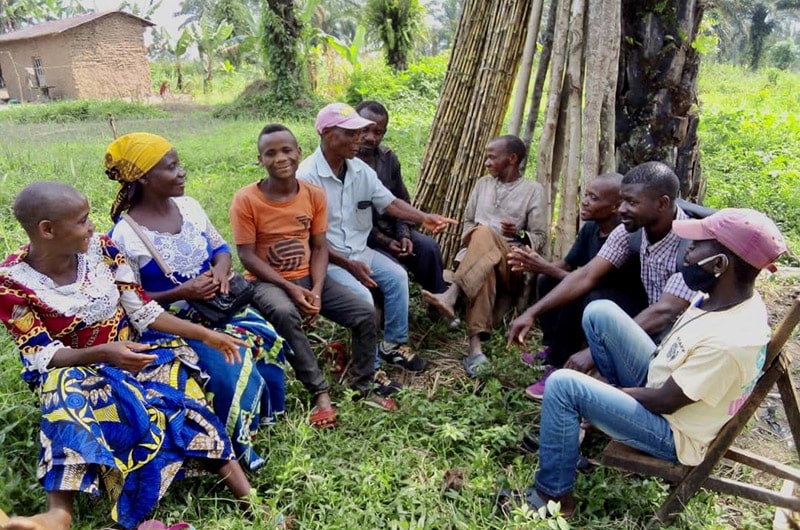
A meeting about non-timber forest products held between a community of Indigenous Peoples and Centre dʼAppui au Développement Intégré en Milieu Rural, a member organisation of Réseau CREF. Image © Réseau CREF
Better funding practices
The survey and interviews pulled out several key recommendations that can help us collectively work toward better funding practices for local organisations within Africa, these include:
- Providing longer-term funding;
- Targeting long-term outcomes rather than short-term projects;
- Providing more flexible and core grants;
- Aligning funding toward grantees’ own priorities and strategies; and
- Making funding processes more accessible and easier.
Challenges of the grantee-donor relationship
In addition, a number of challenges were identified by local organisations in Africa that were interviewed and/or responded to the questionnaire; these often relate to the recommendations above but in addition they identified challenges to effective funding such as:
- Inflexible eligibility criteria, such as the need to have previously handled a certain size grant;
- The ability to build a relationship with donors; the bespoke skills required for grant writing;
- Stringent and time-consuming (and usually unfunded) reporting requirements;
- Tension with some of the large international NGOs, for example when they are acting as intermediaries of funding and provide much smaller sums of funding compared to the percentage of work being undertaken by the local group/s;
- The racial and cultural bias which can be created as a result of much of the funding coming from northern-based organisations; and
- Challenging financial systems which can cause delays and problems in accessing funds and can be reduced by donors reducing tranche funding and accounting for these time delays.
On the other side, funders emphasised the need to measure impact, build technical skills and capacity, and build and access relationships. They also mentioned legal and transaction barriers and top-down funding models which mean that donors do not necessarily understand the context of the work on the ground.
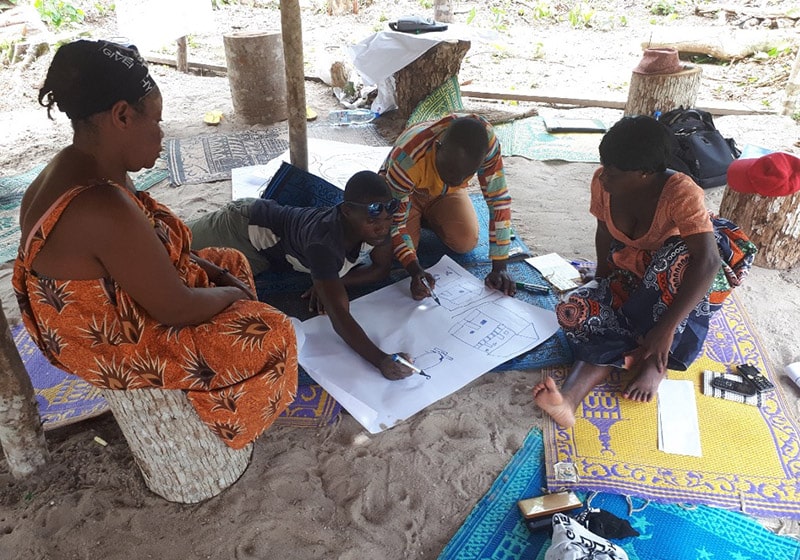
Indigenous women at the Indigenous Leadership Centre in Ntam, close to the border between Cameroon and the Democratic Republic of the Congo, run by Well Grounded in partnership with OKANI. OKANI advocates for Indigenous Peoples’ rights; manages community-based projects, including income generation; works with communities on self-determined development and land use mapping; and uses participatory video. Image © Well Grounded
Building trust and relationships
In summary, the report calls for a move toward increasing direct funding for African Civil Society Organisations, building trust and relationships so that risk can be shared, and building grantees’ ability to fundraise and tap into other sources of funding.
From the donor perspective, there was a call to:
- Invest more in re-granters, pooled funds, or funder collectives who, like Synchronicity Earth, can access these funds;
- Accept and take on transaction costs;
- Include those with local experience in decision-making (for example utilising Indigenous-led funds);
- Fund capacity development;
- Reduce legal barriers where solutions exist;
- Use more user-friendly processes; and
- Treat groups equitably.
Many of these barriers seem like they can be overcome with a few changes on both sides, particularly for donors and intermediaries; where many solutions do also exist and can be learned from, built upon, and further developed.
While the report does highlight some of the least desirable characteristics of humanity, such as cultural prejudice and an inability to see other perspectives, it also highlighted the huge willingness to engage with and overcome these issues and to work better together for a brighter future. Synchronicity Earth and Maliasili plan to continue to develop this work together, bringing together others to collaborate on and find ways forward for a stronger conservation sector.

